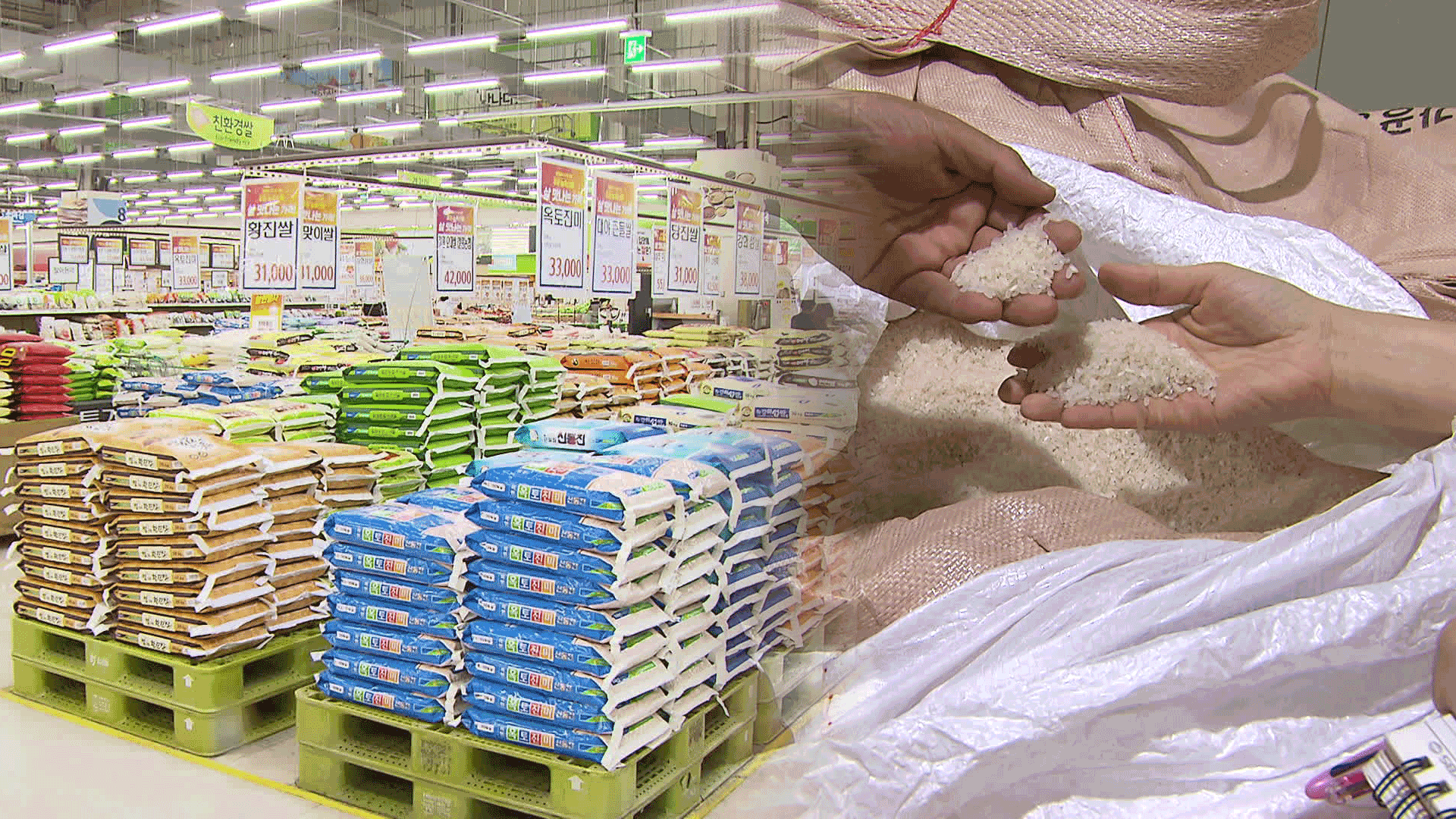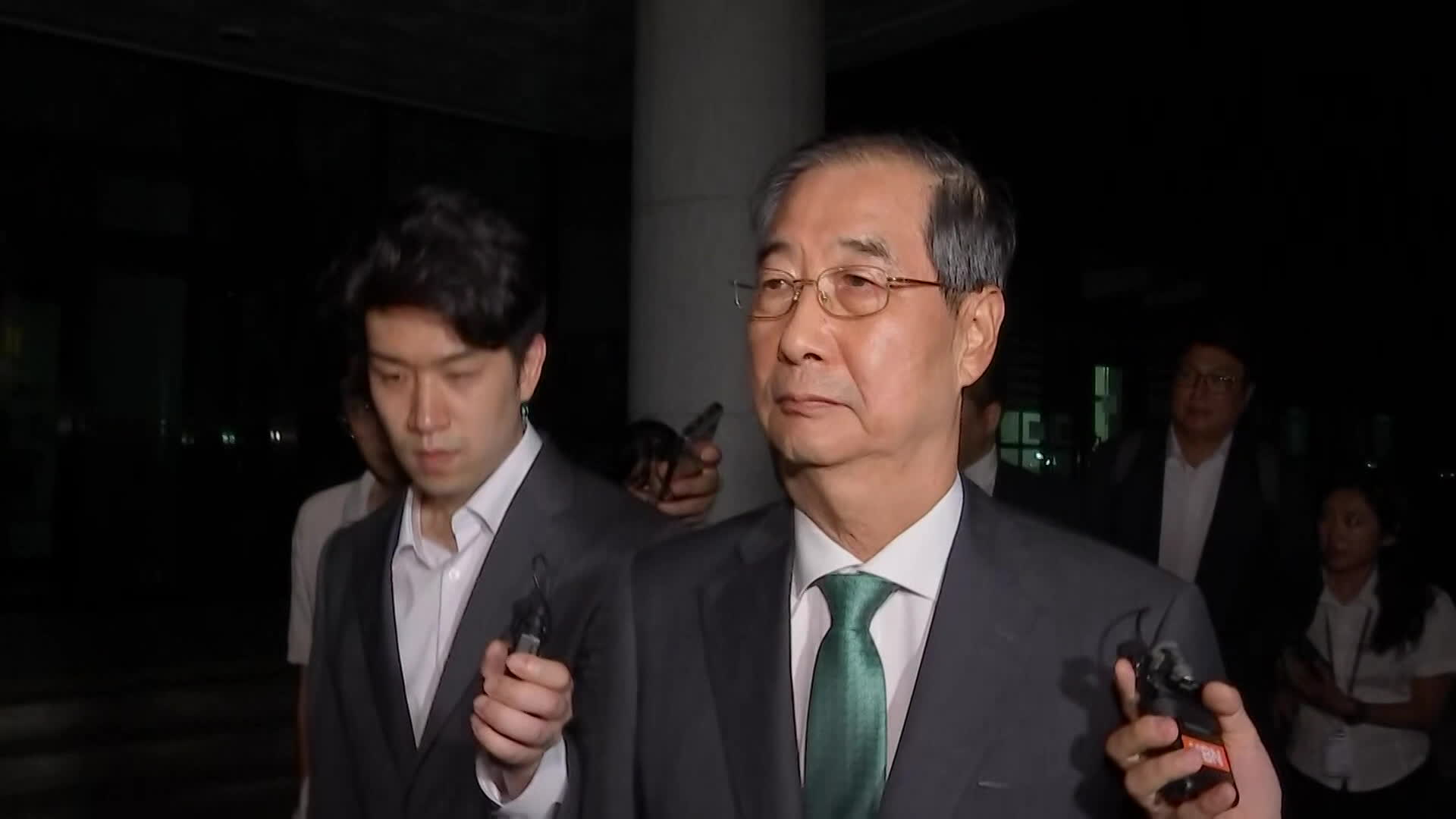[Anchor]
The consumption of rice for processing has significantly increased, but processing companies are struggling to find rice.
On one side, there is surplus rice, so why can't the companies obtain it? Reporter Lee Soo-yeon has investigated on-site.
[Report]
A company that exports rice tteokbokki to various countries around the world.
As K-food gains popularity, they have increased their production facilities, but they are unable to operate them.
This is due to a shortage of rice for making tteok.
They are using government rice such as imported rice and old rice, but the amount allocated for this year has already been used up in the first half.
This is because the allocated amount has decreased by 30% compared to last year.
[So Kwang-young/Head of Rice Tteokbokki Production Company: "We need to keep generating sales, but since the supply of rice is not smooth, we are operating with a lot of restraint. Right now, we are almost not doing any sales..."]
The government sells a portion of government rice, including imported rice, for processing purposes.
The amount allocated for processing this year is 340,000 tons.
This is nearly 20,000 tons less than last year, and it is expected to be completely used up by next month.
The background for reducing the government rice allocated for processing is the issue of rice oversupply.
The government wants processors to use the surplus rice in the private sector for processing, rather than buying government rice, which is purchased at high prices and sold at low prices.
[Byeon Sang-moon/Director of Food Policy, Ministry of Agriculture, Food and Rural Affairs: "The policy direction is to ensure that the development of the rice processing industry helps with the domestic rice supply, and we plan to continuously supply government rice to small and medium-sized companies and rice processing companies focused on exports."]
The price of imported rice and old rice supplied by the government is less than half of the market price of rice.
This year, rice prices are also on the rise, so the processing industry believes that rice sold in the private market cannot be an alternative.
[Park Byeong-chan/President of the Korea Rice Processing Food Association: "Purchasing rice available in the market is simply not competitive, and we need to maintain prices similar to those supplied by government rice..."]
On one side, there is surplus rice, and on the other side, there is a shortage.
It remains to be seen whether the K-food craze will bring changes to the rice market.
This is KBS News, Lee Soo-yeon.
The consumption of rice for processing has significantly increased, but processing companies are struggling to find rice.
On one side, there is surplus rice, so why can't the companies obtain it? Reporter Lee Soo-yeon has investigated on-site.
[Report]
A company that exports rice tteokbokki to various countries around the world.
As K-food gains popularity, they have increased their production facilities, but they are unable to operate them.
This is due to a shortage of rice for making tteok.
They are using government rice such as imported rice and old rice, but the amount allocated for this year has already been used up in the first half.
This is because the allocated amount has decreased by 30% compared to last year.
[So Kwang-young/Head of Rice Tteokbokki Production Company: "We need to keep generating sales, but since the supply of rice is not smooth, we are operating with a lot of restraint. Right now, we are almost not doing any sales..."]
The government sells a portion of government rice, including imported rice, for processing purposes.
The amount allocated for processing this year is 340,000 tons.
This is nearly 20,000 tons less than last year, and it is expected to be completely used up by next month.
The background for reducing the government rice allocated for processing is the issue of rice oversupply.
The government wants processors to use the surplus rice in the private sector for processing, rather than buying government rice, which is purchased at high prices and sold at low prices.
[Byeon Sang-moon/Director of Food Policy, Ministry of Agriculture, Food and Rural Affairs: "The policy direction is to ensure that the development of the rice processing industry helps with the domestic rice supply, and we plan to continuously supply government rice to small and medium-sized companies and rice processing companies focused on exports."]
The price of imported rice and old rice supplied by the government is less than half of the market price of rice.
This year, rice prices are also on the rise, so the processing industry believes that rice sold in the private market cannot be an alternative.
[Park Byeong-chan/President of the Korea Rice Processing Food Association: "Purchasing rice available in the market is simply not competitive, and we need to maintain prices similar to those supplied by government rice..."]
On one side, there is surplus rice, and on the other side, there is a shortage.
It remains to be seen whether the K-food craze will bring changes to the rice market.
This is KBS News, Lee Soo-yeon.
■ 제보하기
▷ 카카오톡 : 'KBS제보' 검색, 채널 추가
▷ 전화 : 02-781-1234, 4444
▷ 이메일 : kbs1234@kbs.co.kr
▷ 유튜브, 네이버, 카카오에서도 KBS뉴스를 구독해주세요!
- Processors struggle to find rice
-
- 입력 2025-08-19 03:00:56

[Anchor]
The consumption of rice for processing has significantly increased, but processing companies are struggling to find rice.
On one side, there is surplus rice, so why can't the companies obtain it? Reporter Lee Soo-yeon has investigated on-site.
[Report]
A company that exports rice tteokbokki to various countries around the world.
As K-food gains popularity, they have increased their production facilities, but they are unable to operate them.
This is due to a shortage of rice for making tteok.
They are using government rice such as imported rice and old rice, but the amount allocated for this year has already been used up in the first half.
This is because the allocated amount has decreased by 30% compared to last year.
[So Kwang-young/Head of Rice Tteokbokki Production Company: "We need to keep generating sales, but since the supply of rice is not smooth, we are operating with a lot of restraint. Right now, we are almost not doing any sales..."]
The government sells a portion of government rice, including imported rice, for processing purposes.
The amount allocated for processing this year is 340,000 tons.
This is nearly 20,000 tons less than last year, and it is expected to be completely used up by next month.
The background for reducing the government rice allocated for processing is the issue of rice oversupply.
The government wants processors to use the surplus rice in the private sector for processing, rather than buying government rice, which is purchased at high prices and sold at low prices.
[Byeon Sang-moon/Director of Food Policy, Ministry of Agriculture, Food and Rural Affairs: "The policy direction is to ensure that the development of the rice processing industry helps with the domestic rice supply, and we plan to continuously supply government rice to small and medium-sized companies and rice processing companies focused on exports."]
The price of imported rice and old rice supplied by the government is less than half of the market price of rice.
This year, rice prices are also on the rise, so the processing industry believes that rice sold in the private market cannot be an alternative.
[Park Byeong-chan/President of the Korea Rice Processing Food Association: "Purchasing rice available in the market is simply not competitive, and we need to maintain prices similar to those supplied by government rice..."]
On one side, there is surplus rice, and on the other side, there is a shortage.
It remains to be seen whether the K-food craze will bring changes to the rice market.
This is KBS News, Lee Soo-yeon.
The consumption of rice for processing has significantly increased, but processing companies are struggling to find rice.
On one side, there is surplus rice, so why can't the companies obtain it? Reporter Lee Soo-yeon has investigated on-site.
[Report]
A company that exports rice tteokbokki to various countries around the world.
As K-food gains popularity, they have increased their production facilities, but they are unable to operate them.
This is due to a shortage of rice for making tteok.
They are using government rice such as imported rice and old rice, but the amount allocated for this year has already been used up in the first half.
This is because the allocated amount has decreased by 30% compared to last year.
[So Kwang-young/Head of Rice Tteokbokki Production Company: "We need to keep generating sales, but since the supply of rice is not smooth, we are operating with a lot of restraint. Right now, we are almost not doing any sales..."]
The government sells a portion of government rice, including imported rice, for processing purposes.
The amount allocated for processing this year is 340,000 tons.
This is nearly 20,000 tons less than last year, and it is expected to be completely used up by next month.
The background for reducing the government rice allocated for processing is the issue of rice oversupply.
The government wants processors to use the surplus rice in the private sector for processing, rather than buying government rice, which is purchased at high prices and sold at low prices.
[Byeon Sang-moon/Director of Food Policy, Ministry of Agriculture, Food and Rural Affairs: "The policy direction is to ensure that the development of the rice processing industry helps with the domestic rice supply, and we plan to continuously supply government rice to small and medium-sized companies and rice processing companies focused on exports."]
The price of imported rice and old rice supplied by the government is less than half of the market price of rice.
This year, rice prices are also on the rise, so the processing industry believes that rice sold in the private market cannot be an alternative.
[Park Byeong-chan/President of the Korea Rice Processing Food Association: "Purchasing rice available in the market is simply not competitive, and we need to maintain prices similar to those supplied by government rice..."]
On one side, there is surplus rice, and on the other side, there is a shortage.
It remains to be seen whether the K-food craze will bring changes to the rice market.
This is KBS News, Lee Soo-yeon.
-
-

이수연 기자 isuyon@kbs.co.kr
이수연 기자의 기사 모음
-
이 기사가 좋으셨다면
-
좋아요
0
-
응원해요
0
-
후속 원해요
0















이 기사에 대한 의견을 남겨주세요.